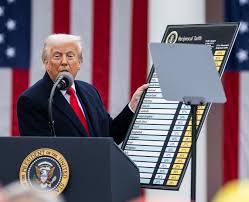
Introduction
Trump tariffs have been a contentious topic since their announcement in 2018, reshaping the landscape of international trade. These tariffs, primarily aimed at China but affecting a variety of countries, were introduced as a strategy to protect American industries and promote domestic manufacturing. Understanding the implications of these tariffs is crucial for businesses, consumers, and policymakers alike, as the global economy continues to grapple with their effects.
The Origins of Trump’s Tariffs
In March 2018, former President Donald Trump imposed tariffs on steel and aluminum imports, citing national security concerns. This marked the beginning of a series of tariffs targeting various goods, including electronics and agricultural products. The rationale behind these measures was to reduce the trade deficit and protect American jobs. However, critics argued that the tariffs would lead to higher prices for consumers and retaliatory measures from affected nations.
Impact on the Economy
According to a report by the Peterson Institute for International Economics, the tariffs have resulted in an increase in prices for U.S. consumers and businesses, with estimates indicating that U.S. households paid about $1,200 more per year due to these tariffs. Industries reliant on imported materials, like construction and manufacturing, faced higher production costs, while agricultural sectors experienced retaliation from trading partners, leading to decreased exports in key markets.
International Reactions and Retaliations
Countries affected by Trump’s tariffs responded with their own measures. For example, China imposed tariffs on $75 billion worth of U.S. goods, impacting American farmers and manufacturers. The European Union and Canada also retaliated with tariffs on U.S. goods, highlighting the escalating trade tensions. These reactions have raised concerns about a potential trade war, which could have far-reaching consequences for global economic stability.
Current Developments and Future Outlook
As of 2023, there have been ongoing discussions regarding the potential lifting or modification of these tariffs. The Biden administration has indicated a willingness to reevaluate trade policies but has yet to make significant changes. Analysts suggest that the future of U.S. tariffs will largely depend on negotiations with China and other trade partners, along with the overall state of the global economy. The changing landscape of international trade agreements could also play a pivotal role in the trajectory of these tariffs.
Conclusion
Trump tariffs have left a lasting impact on the international trade environment, prompting increased prices, retaliatory measures, and discussions about future trade policies. For businesses and consumers, the repercussions of these tariffs are significant and multifaceted. As trade relations evolve, staying informed about changes in tariff policies will be essential for navigating the complex global market landscape.



